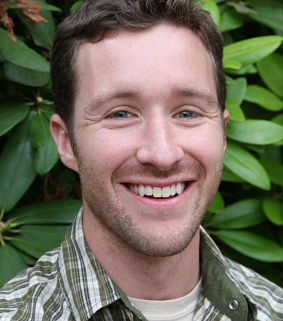Track: PV/Semiconductors
Undergrad: Bates College, Lewiston, ME - Chemistry
Internship: SolarWorld
Current Job Title: Senior Scientist at Polaris Battery Labs
My path to the solar industry was not direct. After graduating from Bates College in 2001 with a BS in Chemistry, I landed a job as an analytical chemist in the pharmaceutical industry. I enjoyed my career, but over the years I developed a nagging interest in renewable energy, with the specific goal of helping improve the efficiency and affordability of solar power. My inadequate understanding of photovoltaics and my lack of relevant industry experience made it obvious that I would have to return to school before transitioning to a new career. It was actually during my search for doctoral programs that I stumbled upon the Master’s Industrial Internship Program. Their semiconductor and photovoltaic device processing track seemed the perfect bridge between my previous career and my desired direction. It was structured to teach me the theory I lacked as well as provide a gateway to the industry experience that would make my resume stand out to employers. It’s also worth mentioning that at the time I felt the 4-6 year time commitment required for a PhD, compared about a year for the master’s degree, might be a drastic first step into a completely foreign field.
This isn’t to say that I got off easy. The summer coursework was fast-paced and demanding, with three weeks of all-day classes loaded with homework and exams followed by three weeks of mixed class and lab time, during which we worked in groups to complete assignments designed to familiarize us with a wide variety of processing and characterization equipment. The summer was capped off with four of the most intense weeks that I’ve experienced in academics. Broken into groups of students with varied backgrounds (e.g. physicists, chemists, engineers) and provided with minimal instructor oversight, we were challenged to fabricate and characterize several semiconductor devices, including a working solar cell. We learned to work safely and efficiently with potentially dangerous chemicals as well as high voltage and high temperature equipment. Perhaps just as valuable, we learned to work toward a common goal with a diverse group of people under stressful conditions. Tensions ran high at times but the shared experience actually tended to foster a sense of camaraderie over animosity.
Following the summer session and some additional coursework, I secured an internship in the Research and Development Department at SolarWorld in Hillsboro, OR. During this 9-month stint, my projects were mostly centered on materials characterization related to silicon crystal growing but I also gained valuable exposure to nearly all aspects of production. No longer hesitant to commit to the photovoltaics industry, when I graduated last year I jumped at the opportunity to continue my work at SolarWorld while pursuing a PhD as a transitional fellow within the Center for Sustainable Materials Chemistry. My focus is now on developing thin films that will increase the absorption of sunlight while extending the “lifetime” of photogenerated charge carriers within the cell. These improvements should increase the probability that the charge carriers can be extracted as usable electricity. I am thrilled that my work might actually help to increase the efficiency and drive down the cost per watt of industrially produced, commercially available solar cells, especially when I consider that just a few short years ago this seemed like a far off and unlikely scenario.

